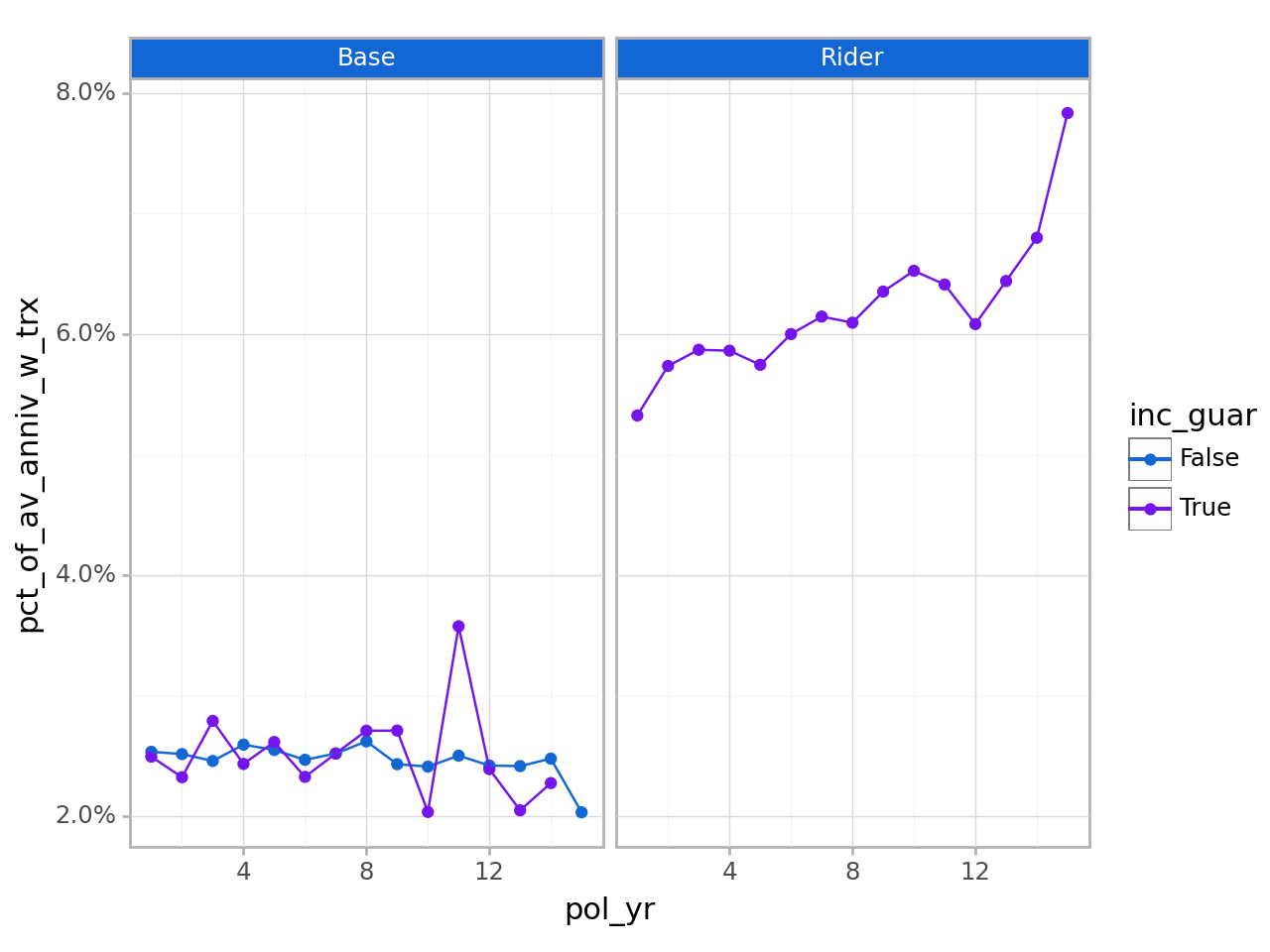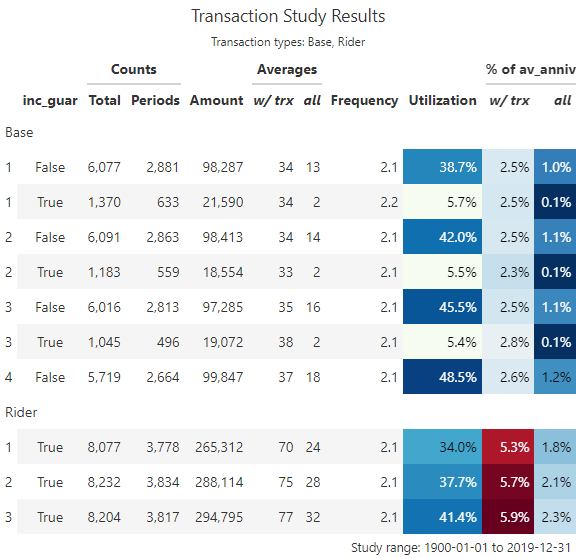Rows: 141252
Columns: 19
$ pol_num <i64> 1, 1, 1, 1, 1, 1, 2, 2, 2, 2
$ status <enum> Active, Active, Active, Active, Active, Active, Active, Active, Active, Active
$ issue_date <date> 2014-12-17, 2014-12-17, 2014-12-17, 2014-12-17, 2014-12-17, 2014-12-17, 2007-09-24, 2007-09-24, 2007-09-24, 2007-09-24
$ inc_guar <bool> True, True, True, True, True, True, False, False, False, False
$ qual <bool> False, False, False, False, False, False, False, False, False, False
$ age <i64> 56, 56, 56, 56, 56, 56, 71, 71, 71, 71
$ product <cat> b, b, b, b, b, b, a, a, a, a
$ gender <cat> F, F, F, F, F, F, F, F, F, F
$ wd_age <i64> 77, 77, 77, 77, 77, 77, 71, 71, 71, 71
$ premium <f64> 370.0, 370.0, 370.0, 370.0, 370.0, 370.0, 708.0, 708.0, 708.0, 708.0
$ term_date <date> None, None, None, None, None, None, None, None, None, None
$ pol_yr <u32> 1, 2, 3, 4, 5, 6, 1, 2, 3, 4
$ pol_date_yr <date> 2014-12-17, 2015-12-17, 2016-12-17, 2017-12-17, 2018-12-17, 2019-12-17, 2007-09-24, 2008-09-24, 2009-09-24, 2010-09-24
$ pol_date_yr_end <date> 2015-12-16, 2016-12-16, 2017-12-16, 2018-12-16, 2019-12-16, 2020-12-16, 2008-09-23, 2009-09-23, 2010-09-23, 2011-09-23
$ exposure <f64> 1.0, 1.0, 1.0, 1.0, 1.0, 0.040983606557377046, 1.0, 1.0, 1.0, 1.0
$ trx_n_Base <i32> 0, 0, 0, 0, 0, 0, 1, 1, 1, 1
$ trx_n_Rider <i32> 0, 0, 0, 0, 0, 0, 0, 0, 0, 0
$ trx_amt_Base <f64> 0.0, 0.0, 0.0, 0.0, 0.0, 0.0, 25.0, 12.0, 7.0, 52.0
$ trx_amt_Rider <f64> 0.0, 0.0, 0.0, 0.0, 0.0, 0.0, 0.0, 0.0, 0.0, 0.0

